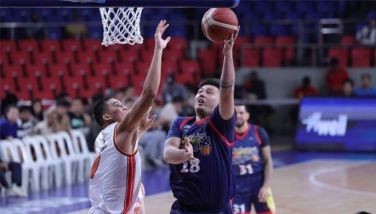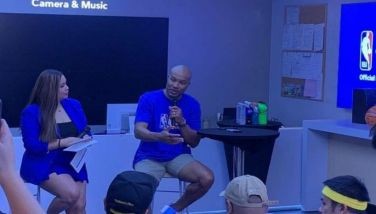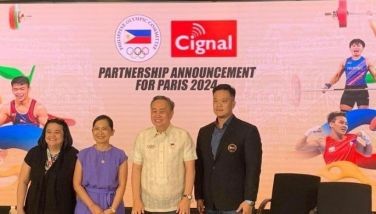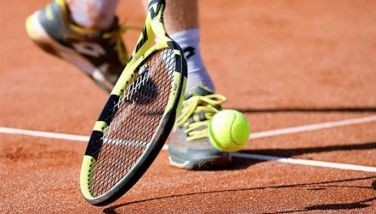Let’s not kid ourselves
On Aug. 4, The STAR featured an article by the esteemed and talented Rick Olivares, about the perils of collegiate sports recruiting. The fact of the matter is that there has been something wrong with recruiting in collegiate sports for decades. As early as the 1960’s, amateur basketball players suspected of being “mercenaries” would be recruited to play for one school, sometimes win a championship, flunk out or leave, then do it again at another school. Since then, things have definitely escalated.
In the United States, enforcement of anti-illegal recruitment rules is very strict. This writer has seen firsthand how tight regulations are. At a basketball camp sponsored by an athletic shoe brand in Suwannee, Georgia 16 years ago, 300 of the best high school players in the US (including twin future NBA centers Brook and Robin Lopez, and Jordan Wilkes, son of NBA legend Jamaal Wilkes) were gathered for a four-day camp. During that time, they were given uniforms and shoes for all the workouts every day. An All-Star Game was arranged for seniors, and another for underclassmen, for which they were given more uniforms and shoes. They had to return every single item of clothing they were given, or buy them at a 50 percent discount. This writer still recalls the overpowering aroma of standing in a function room filled with hundreds of gigantic, soaking, freshly sweated-in jerseys, shorts and sneakers. Whew.
The camps are organized by every major sports shoe brand, and are held for all major American sports, not just basketball. On a more serious note, coaches from colleges and universities all over the country attend these camps, hoping to snag talent to improve their programs. However, they are not even allowed to talk to these kids, unless any of them is graduating and has declared he is already open to playing at a college of his choice; but there are rules for that, too. It can’t be done at the camp. Many of the parents there even refuse interviews, wary of committing any violations against NCAA rules. So all the coaches can do is watch, take notes, and salivate.
The major difference between the US and the Philippines is that in the US, the NCAA is a nationwide regulatory body that oversees collegiate sports. In the Philippines, it is the oldest collegiate league in the country, and has the UAAP for a rival. The two coexist and compete for sponsors, TV contracts, and players. In America, the NCAA keeps a watchful eye on how teams scout, recruit, manage and treat athletes. Any form of compensation is disallowed. Remember how high schooler Lebron James got into trouble for being gifted with two pairs of basketball shoes? On the other hand, there have also been players like Lamar Odom, who played for five different high schools, often to simply remain a traveling Amateur Athletic Union (AAU) athlete.
In the Philippines, professional sports are regulated by the Games and Amusements Board (GAB). Elite athletes fall under the responsibility of the Philippine Sports Commission, which in turn is directly under the Office of the President. This leaves a gigantic void in which collegiate leagues pretty much are on their own. Schools in Metro Manila are in a their own world, some with sister campuses in sister leagues to the south of NCR. Schools beyond are in their own little universes, too.
As a result, the fluid nature of rules shows how arbitrary policies are. In the last decade alone, we’ve seen rule changes on residency and number of foreign athletes, and even temporary restraining orders by individual schools against their own leagues in Metro Manila alone.
Things all started to escalate roughly a quarter of a century ago. It may be hard to believe now, but there was a time each league was starved for television coverage, even just for news. When TV networks realized the potential for ratings and revenue, contracts brought in money and exposure, which in turn attracted sponsor and alumni support. This raised the stakes both in terms of money and pride. The pressure to win increased. And frankly, there were practically no rules.
Enforcement is the biggest challenge to any regulation. There are no receipts, and anything given to an athlete may be labeled a “gift,” “bonus,” “loan,” and so on, which would all be disallowed under US NCAA regulations. Some of the forms of compensation rumored to have been given local athletes include cash, cars, scholarships, laptops, mobile phones, rent-free homes, trips, employment for parents, passing grades, food, and so on. Of course, nothing can be proven, and complicit players will never squeal. Why ruin a good thing? The same applies to alleged salary cap violators in professional sports leagues. No paper trail, no evidence, no crime. In addition, there is really nothing stopping big schools from NCR from poaching talent from provincial schools. Some of the material benefits listed above are also allegedly offered provincial student athletes. That is one constant obstacle to increased competitiveness in the rest of the country.
In September of 2019, California passed a law allowing student athletes at public and private universities anywhere in the state to sign contracts with sportswear brands, soft drink makers or other businesses, and profit from the use of their images, names or likenesses in the same way that professional athletes do. This is in direct conflict with US NCAA rules. Maybe there should be a similar law in the Philippines. It would save a lot of artifice and skulking around.
- Latest
- Trending




























